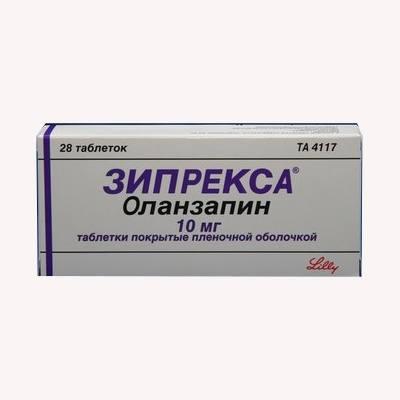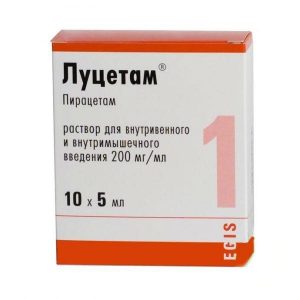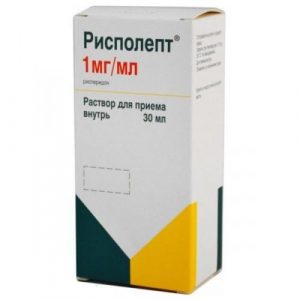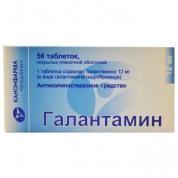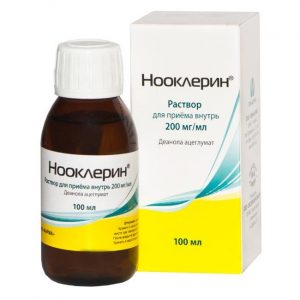Description
Release form
dispersible tablets
Packing
28 pcs.
Pharmacological action
Ziprex Zadis has an antipsychotic effect.
Pharmacodynamics
In preclinical studies, the affinity of olanzapine for serotonin 5-HT2A / 2C, 5-HT3, 5-HT6 dopamine D1, D2, D3, D4, D5 muscarinic M1 5β1-adrenoreceptors and histamine A1 was established. In experimental animal studies, the presence of olanzapine antagonism against serotonin 5-HT, dopamine and cholinergic receptors was revealed. In vitro and in vivo olanzapine has a more pronounced affinity and activity for serotonin 5-HT2 receptors, compared with dopamine D2 receptors. According to electrophysiological studies, olanzapine selectively reduces the excitability of mesolimbic (A10) dopaminergic neurons and at the same time has a negligible effect on striatal (A9) neural pathways involved in the regulation of motor functions. Ol 5-HT6 dopamine D1, D2, D3, D4, D5 muscarinic M1-5 1-adrenergic receptors and histamine H1 receptors. In experimental animal studies, the presence of olanzapine antagonism against serotonin 5-HT, dopamine and cholinergic receptors was revealed. In vitro and in vivo olanzapine has a more pronounced affinity and activity for serotonin 5-HT2 receptors, compared with dopamine D2 receptors. According to electrophysiological studies, olanzapine selectively reduces the excitability of mesolimbic (A10) dopaminergic neurons and at the same time has a negligible effect on striatal (A9) neural pathways involved in the regulation of motor functions. Ol 5-HT6 dopamine D1, D2, D3, D4, D5 muscarinic M1-5 1-adrenergic receptors and histamine H1 receptors. In experimental animal studies, the presence of olanzapine antagonism against serotonin 5-HT, dopamine and cholinergic receptors was revealed. In vitro and in vivo olanzapine has a more pronounced affinity and activity for serotonin 5-HT2 receptors, compared with dopamine D2 receptors. According to electrophysiological studies, olanzapine selectively reduces the excitability of mesolimbic (A10) dopaminergic neurons and at the same time has a negligible effect on striatal (A9) neural pathways involved in the regulation of motor functions. Ol In experimental animal studies, the presence of olanzapine antagonism against serotonin 5-HT, dopamine and cholinergic receptors was revealed. In vitro and in vivo olanzapine has a more pronounced affinity and activity for serotonin 5-HT2 receptors, compared with dopamine D2 receptors. According to electrophysiological studies, olanzapine selectively reduces the excitability of mesolimbic (A10) dopaminergic neurons and at the same time has a negligible effect on striatal (A9) neural pathways involved in the regulation of motor functions. Ol In experimental animal studies, the presence of olanzapine antagonism against serotonin 5-HT, dopamine and cholinergic receptors was revealed. In vitro and in vivo olanzapine has a more pronounced affinity and activity for serotonin 5-HT2 receptors, compared with dopamine D2 receptors. According to electrophysiological studies, olanzapine selectively reduces the excitability of mesolimbic (A10) dopaminergic neurons and at the same time has a negligible effect on striatal (A9) neural pathways involved in the regulation of motor functions. Ol compared to dopamine D2 receptors. According to electrophysiological studies, olanzapine selectively reduces the excitability of mesolimbic (A10) dopaminergic neurons and at the same time has a negligible effect on striatal (A9) neural pathways involved in the regulation of motor functions. Ol compared to dopamine D2 receptors. According to electrophysiological studies, olanzapine selectively reduces the excitability of mesolimbic (A10) dopaminergic neurons and at the same time has a negligible effect on striatal (A9) neural pathways involved in the regulation of motor functions. OlAnzapine reduces the conditioned protective reflex (a test characterizing antipsychotic activity) at doses lower than the doses that cause catalepsy (a disorder that reflects side effects on motor function). Olanzapine enhances the anti-anxiety effect during the anxiolytic test.
Olanzapine provides a statistically significant reduction in both productive (including delusions, hallucinations) and negative disorders.
Pharmacokinetics
Dispersible olanzapine tablets and coated olanzapine tablets are bioequivalent and have a similar rate and degree of absorption. Dispersible tablets of olanzapine are used in the same amount and with the same frequency as coated tablets of olanzapine. Dispersible olanzapine tablets may be used in place of coated coated olanzapine tablets.
Suction. After oral administration, olanzapine is well absorbed from the digestive tract. Cmax in plasma is reached after 5-8 hours. Absorption of olanzapine is independent of food intake. Studies with different doses in the range from 1 to 20 mg have shown that plasma concentrations of olanzapine vary linearly and in proportion to the dose.
distribution. At a plasma concentration of 7 to 1000 ng / ml, binding to plasma proteins is about 93%. Olanzapine is primarily associated with albumin and acidic 1-glycoprotein.
Metabolism. Olanzapine is metabolized in the liver as a result of conjugation and oxidation processes. The main circulating metabolite is 10-N-glucuronide, which theoretically does not penetrate the BBB. The isoenzymes CYP1A2 and CYP2D6 are involved in the formation of N-desmethyl and 2-hydroxymethyl metabolites of olanzapine. Both metabolites in experimental animal studies have significantly less pronounced pharmacological activity in vivo than olanzapine. The main pharmacological activity of the drug is due to an unchanged substance – olanzapine, which has the ability to penetrate the BBB.
The activity of the CYP2D6 isoenzyme does not affect the metabolism level of olanzapine.
Withdrawal. In healthy volunteers, after oral administration, the average T1 / 2 is 33 hours (21 54 hours for 5 95%), and the average plasma olanzapine clearance is 26 l / h (12 47 l / h for 5 95%). About 57% of radio-labeled olanzapines are excreted in the urine and 30% in the feces, mainly in the form of inactive metabolites.
Pharmacokinetics in special clinical cases
Variability of pharmacokinetic parameters of olanzapine depending on smoking, gender and age are presented in the table.
Patient characteristics T1 / 2, plasma plasma clearance, l / h
Non-smokers38,618.6
Smokers30,427,7
Women36,718,9
Men32,327,3
Elderly (65 years and older) 51,817,5
Younger 65 years33,818.2
However, the degree of T1 / 2 changes and clearance under the influence of each of the factors listed in the table is significantly inferior to the degree of difference between these indicators between individuals.
No significant differences were found between the mean T1 / 2 and plasma olanzapine clearance in individuals with severe renal impairment compared with those with normal renal function.
In smokers with minor impaired liver function, clearance of olanzapine is lower than in non-smokers without impaired liver function.
In a study involving European individuals, of Japanese and Chinese origin, differences in the pharmacokinetics of olanzapine related to race were not found.
Contraindications
Hypersensitivity.
Use during pregnancy and lactation
There is insufficient clinical experience with olanzapine during pregnancy, therefore, the drug is only possible in cases where the expected benefit of therapy for the mother significantly exceeds the potential risk to the fetus.
Patients should be warned that in case of pregnancy occurrence or planning during the period of treatment with olanzapine, they should inform their attending physician about it.
The study found that olanzapine is excreted in breast milk. Average dose (mg / kg) received by the child upon reachingMaternal CSS was 1.8% of the maternal dose (mg / kg). If it is necessary to use the drug during lactation, breastfeeding is recommended to be stopped.
Use for impaired renal liver function. For patients with moderate liver failure and severe renal failure, it is recommended that the initial dose of olanzapine be reduced to 5 mg / day.
Special instructions
Malignant antipsychotic syndrome (ZNS) – a potentially fatal symptom complex – can develop during treatment with any antipsychotics, including olanzapine. However, to date, there is no data confirming a reliable association of olanzapine administration with the development of this condition. Clinical manifestations of ZNS include a significant increase in body temperature, muscle rigidity, a change in mental status and autonomic disorders (unstable pulse or blood pressure, tachycardia, cardiac arrhythmias, sweating). Additional symptoms may include an increase in CPK, myoglobinuria (rhabdomyolysis), and acute renal failure. Clinical manifestations of malignant antipsychotic syndrome or a significant increase in body temperature without other symptoms of central nervous system require the withdrawal of all antipsychotics, including olanzapine.
In comparative studies, treatment with olanzapine was significantly less often accompanied by the development of dyskinesia requiring medical correction than the use of typical and other atypical antipsychotics. However, the risk of tardive dyskinesia with prolonged antipsychotic therapy should be considered. With the development of signs of tardive dyskinesia, dose adjustment of an antipsychotic is recommended. It should be borne in mind that when transferred to olanzapine, symptoms of tardive dyskinesia may develop due to the simultaneous cancellation of previous therapy.
The efficacy of olanzapine in elderly patients with dementia-related psychosis has not been established. In this category of patients, in the placebo-controlled clinical trials, the mortality rate in the olanzapine group was higher than in the placebo group (3.5 versus 1.5%, respectively). Risk factors that may predispose this group of patients to higher mortality with olanzapine treatment include age> 80 years, sedation, combined use with benzodiazepines, or lung pathology (e.g. pneumonia with or without aspiration).
There is not enough data to establish differences in the incidence of cerebrovascular disorders and / or mortality (compared with placebo), and in risk factors in this group of patients when taking olanzapine by mouth and with / or injection.
In some cases, taking olanzapine, usually in the early stages of therapy, was accompanied by a transient, asymptomatic increase in serum levels of hepatic transaminases (AST and ALT). Rare cases of hepatitis have been reported. Particular caution is necessary when increasing serum AST and / or ALT levels in patients with hepatic impairment, with a limited functional reserve of the liver, or in patients receiving treatment with potentially hepatotoxic drugs. In case of increased levels of AST and / or ALT during treatment with olanzapine, careful monitoring of the patient is required and, if necessary, a dose reduction.
There is a higher prevalence of diabetes in patients with schizophrenia. As with some other antipsychotic medications, cases of hyperglycemia have been very rare, diabetes mellitus, exacerbation of pre-existing diabetes, ketoacidosis and diabetic coma. A causal relationship between antipsychotic drugs and these conditions has not been established. Careful clinical monitoring of patients with diabetes and patients with risk factors for diabetes is recommended.
Olanzapine should be used with caution in patients with a history of epileptic seizures or exposed to factors that reduce the seizure threshold. In these patients, convulsive seizures were rarely observed with olanzapine treatment.
Cerebrovascular adverse reactions (eg, stroke, transient ischemic attack), including fatal outcomes, have been reported in studies of olanzapine in elderly patients with psychosis associated with dementia. In placebo-controlled studies, a higher incidence of cerebrovascular adverse events was observed in patients in the olanzapine group compared with the placebo group (1.3 versus 0.4%, respectively).
All patients with cerebrovascular disorders had previous risk factors for developing cerebrovascular adverse reactions (for example, the previously noted case of cerebrovascular adverse reaction or transient ischemic attack, arterial hypertension, smoking), as well as concomitant diseases and / or medications associated with cerebrovascular adverse reactions . Olanzapine is not indicated for the treatment of patients with psychosis associated with dementia.
As with other antipsychotics, caution should be exercised in olanzapine therapy in the following patient groups:
– with a reduced number of leukocytes and / or neutrophils in the peripheral blood due to various causes
– with signs of inhibition / toxic impairment of bone marrow function under the influence of drugs in the anamnesis
– with inhibition of bone marrow function due to concomitant disease, radiotherapy or chemotherapy in the anamnesis
– with hypereosinophilia or myeloproliferative disease.
In clinical studies, the use of olanzapine in patients with clozapine-dependent neutropenia or agranulocytosis in history was not accompanied by relapses of these disorders.
In clinical trials, olanzapine therapy has rarely been accompanied by anticholinergic side effects. However, the clinical experience with olanzapine in patients with concomitant diseases is limited, therefore, caution is advised when prescribing olanzapine to patients with clinically significant prostatic hypertrophy, paralytic bowel obstruction, angle-closure glaucoma, and similar conditions.
Given the main effect of olanzapine on the central nervous system, caution should be exercised when using olanzapine in combination with other centrally acting drugs, as well as alcohol.
Effects on driving ability and driving mechanisms
Patients taking olanzapine should be careful when operating mechanical devices, including motor vehicles, since olanzapine can cause drowsiness.
composition 1 tablet contains: active substance 10 mg olan gelatin, mannitol, aspartame, sodium methyl parahydroxybenzoate, sodium propyl parahydroxybenzoate.
Dosage and administration
Inside, regardless of food intake. Due to fragility, the tablet should be taken immediately after removal from the blister. Dispersible tablets of olanzapine quickly dissolve in saliva and are easily swallowed. In addition, immediately before administration, the tablet can be dissolved in a glass of water or other liquid (orange juice, apple juice, milk or coffee).
The daily dose must be selected individually, depending on the clinical condition of the patient.
For the treatment of schizophrenia and similar psychotic disorders, the recommended initial dose of olanzapine is 10 mg 1 time / day. The therapeutic doses of olanzapine range from 5 to 20 mg / day. A dose increase of more than the standard daily dose of 10 mg is recommended only after an appropriate clinical examination of the patient.
For the treatment of acute mania in bipolar disorder, the recommended initial dose of olanzapine is 15 mg 1 time / day as monotherapy or 10 mg 1 time / day in combination with lithium or valproate. The therapeutic doses of olanzapine range from 5 to 20 mg per day. A dose increase in excess of the standard daily dose of 15 mg is recommended only after an appropriate clinical examination of the patient. The dose should be increased gradually, at intervals of at least 24 hours.
Maintenance therapy for bipolar disorder: patients taking olanzapine for the treatment of acute mania need to continue maintenance therapy at the same dose. In patients in remission, the recommended initial dose of olanzapine is 10 mg 1 time / day. In the future, the daily dose must be selected individually, depending on the clinical condition of the patient, in the range from 5 to 20 mg / day.
Olanzapine in combination with fluoxetine should be prescribed 1 time / day, regardless of food intake. As a rule, the initial dose is 5 mg of olanzapine and 20 mg of fluoxetine. If necessary, dose changes of both olanzapine and fluoxetine are allowed.
For elderly patients or patients with other clinical risk factors, including severe renal failure or moderate liver failure, it is recommended that the initial dose of olanzapine be reduced to 5 mg / day.
For patients with a combination of factors, in the presence of which a decrease in the metabolism of olanzapine is possible (female patients, senile age, non-smokers), a decrease in the initial dose of olanzapine may also be recommended.
Research data on olanzapine for therapy in children and adolescents under the age of 18 is limited.
Side effects
Very often (? 10%) – drowsiness, weight gain 34% – increased plasma prolactin concentration, which was weakly expressed and transient (the average maximum prolactin concentrations did not reach the upper limit of normal (VGN) and statistically significant did not differ from placebo). Clinical manifestations of hyperprolactinemia associated with olanzapine (i.e. gynecomastia, galactorrhea, and breast enlargement) have been rare. In most patients, normalization of prolactin levels was observed without olanzapine withdrawal.
Often (? 1%, but less than 10%) – dizziness, asthenia, akathisia, increased appetite, peripheral edema, orthostatic hypotension, dry mouth and constipation. In clinical trials (n = 107) in 1.9% of cases, triglycerides were 2 times or more higher than VGN (there were no cases of exceeding VGN more than 3 times).
Rarely: transient, asymptomatic increase in hepatic transaminases (AST and ALT) in serum.
In isolated cases: an increase in plasma glucose up to? 200 mg / dl (suspected diabetes mellitus), as well as from? 160 mg / dl, but up to less than 200 mg / dl (suspected hyperglycemia) in patients with baseline glucose – 140 mg / dl.
In some cases: asymptomatic eosinophilia.
Adverse effects in special patient groups
In patients with psychosis associated with dementia, gait and fall impairment were very often observed (? 10%).
In elderly patients with psychosis associated with dementia, often (? 1%, but less than 10%) – urinary incontinence and pneumonia.
In patients with psychosis induced by the drug (dopamine agonist) in Parkinson’s disease, very often (? 10%) and with a higher frequency than in the placebo group, there was an increase in symptoms of parkinsonism, hallucination.
In patients with bipolar mania receiving olanzapine in combination with lithium or valproate, weight gain, dry mouth, increased appetite, tremor often (? 1%, but less than 10%) – speech disorder were observed .
The following are the main side effects and their frequency, registered during clinical trials and / or in the post-registration period.
On the part of the body as a whole:? 10% – increase in body weight1? 1%, but 2? 0.1%, but 2 less than 0.01% – an allergic reaction3,4 reaction to cancellation3,5.
On the part of the cardiovascular systems:? 0.1%, but less than 1% – bradycardia2? 1%, but less than 10% – orthostatic hypotension1 less than 0.01% – venous thromboembolism3.
From the digestive system:? 1%, but less than 10% – constipation2 dry mouth2 increased appetite2 less than 0.01% – hepatitis3 pancreatitis3.
From the side of metabolism: less than 0.01% – diabetic coma3 diabetic ketoacidosis3, 4 hyperglycemia3 hypertriglyceridemia3, 7? 1%, but less than 10% – peripheral edema1.
From the musculoskeletal system: less than 0.01% – rhabdomyolysis 3.
From the side of the central nervous system:? 1%, but less than 10% – akathisia 2 dizziness 2? 0.01%, but less than 0.1% – convulsive seizures 3? 10% – drowsiness 2.
Dermatological reactions:? 0.01%, but less than 0.1% – rash3.
From the reproductive system: less than 0.01% – priapism3.
On the part of laboratory indicators:? 1%, but less than 10% – an increase in ALT1 and AST1 single cases of increased blood glucose from? 160 mg / dl to less than 200 mg / dl (suspected hyperglycemia) 1 single cases of increased glucose in blood up to? 200 mg / dl (suspected diabetes mellitus) 1 single cases of an increase in the level of triglycerides? 2 times VGN1? 10% – an increase in the level of prolactin1.
From the hemopoietic system: in? 1%, but less than 10% of cases – eosinophilia1 in? 0.01%, but less than 0.1% of cases – leukopenia3 less than 0.01% – thrombocytopenia3.
1 assessment of indicators from the clinical trial database
2 side effects recorded in the clinical trial database
3 side effects recorded spontaneously in post-marketing studies
4 for example: anaphylactic reaction, angioedema, pruritus or urticaria
5. sweating, nausea, or vomiting
6 in the COSTART classification is referred to as diabetic acidosis
7 in the COSTART classification is referred to as hyperlipidemia.
Drug Interactions
The metabolism of olanzapine may be altered by inhibitors or inducers of isoenzymes of the cytochrome P450 system that exhibit specific activity against CYP1A2. Olanzapine clearance is increased in smoking patients and in patients taking carbamazepine (due to an increase in CYP1A2 activity). Known potential CYP1A2 inhibitors may decrease olanzapine clearance. Olanzapine is not a potential inhibitor of CYP1A2 activity, therefore, when taking olanzapine, the pharmacokinetics of drugs mainly metabolized with CYP1A2 (such as theophylline) does not change.
Clinical studies have shown that a single dose of olanzapine during therapy with the following drugs was not accompanied by a suppression of the metabolism of these drugs: imipramine or its metabolite desipramine (CYP2D6, CYP3A, CYP1A2), warfarin (CYP2C19), theophylline (CYP1A2) or diazepam (CYP3A19), CYP2. There were also no signs of drug interaction when using olanzapine in combination with lithium or biperiden.
Against the background of a steady concentration of olanzapine, a change in the pharmacokinetics of ethanol was not observed. However, the intake of ethanol with olanzapine may be accompanied by an increase in the pharmacological effects of olanzapine, for example, sedation.
Single doses of antacids containing aluminum or magnesium or cimetidine did not interfere with the oral bioavailability of olanzapine. The combined use of activated carbon reduced the bioavailability of olanzapine when ingested to 50-60%. Fluoxetine (60 mg once or 60 mg daily for 8 days) causes an increase in Cmax of olanzapine by an average of 16% and a decrease in clearance of olanzapine by an average of 16%. The degree of influence of this factor is significantly inferior to the severity of individual differences in these indicators, therefore, it is usually not recommended to change the dose of olanzapine when it is prescribed in combination with fluoxetine.
Fluvoxamine, an inhibitor of CYP1A2, decreases olanzapine clearance. The result is an average increase in Cmax of olanzapine with the administration of fluvoxamine by 54% in non-smoking women and by 77% in male smokers, and an average increase in AUC of olanzapine is 52 and 108%, respectively. Small doses of olanzapine must be prescribed to patients, who are receiving fluvoxamine treatment together.
In vitro studies using human liver microsomes have shown that olanzapine slightly inhibits the formation of valproate glucuronide (the main pathway of valproate metabolism). Valproate also slightly affects the metabolism of olanzapine in vitro. Therefore, a clinically significant pharmacokinetic interaction between olanzapine and valproate is unlikely.
In vitro, olanzapine exhibits antagonism against dopamine and, like other antipsychotics (antipsychotics), can theoretically suppress the effects of levodopa and dopamine agonists.
The absorption of olanzapine is independent of food intake.
According to in vitro studies using human liver microsomes, olanzapine also showed an extremely small potential in suppressing the activity of the following isoenzymes of cytochrome P450: CYP1A2, CYP2C9, CYP2C19, CYP2D6 and CYP3A.
Overdose
Symptoms: very common ( 10%) – tachycardia, agitation / aggression, articulation disorder, various extrapyramidal disorders and disorders of consciousness of varying severity (from sedation to coma). Other clinically relevant symptoms are convulsions, malignant neuroleptic syndrome, respiratory depression, aspiration, arterial hypertension or hypotension, heart arrhythmias (
Treatment): standard procedures for overdose (gastric lavage, prescription of activated oyster) are shown. vomiting induction The co-administration of activated charcoal showed a decrease in the bioavailability of olanzapine when taken up to 50-60%. x Clinical status and control of vital organ functions, including treatment of arterial hypotension, circulatory disorders, and maintenance of respiratory function. Epinephrine, dopamine, and other sympathomimetic agents that are agonists of -Adrenoreceptors should not be used because stimulation of these receptors may exacerbate arterial hypotension.
Storage Conditions
The product should be stored in a dry, dark place at a temperature not exceeding 20 ° C.
Shelf life
2 years.
Deystvuyushtee substance
Olanzapine
Terms and conditions
prescription
Possible product names
ZIPREXA ZIDIS 0.01 N28 TABLE
ZIPREXA ZIDIS 0.01 N28 TABLE DISPERSION
Ziprex Zidis 10mg Tab. dispersible X28 (R)
Ziprex Zidis 10mg Tab. dispersible X28 (R) /! up to 01. 12g /
Ziprex Zidis 10mg Tab. dispersible X28 (R) /! before 04.11g /
